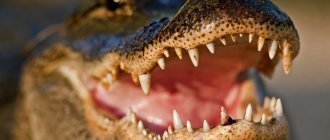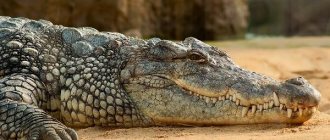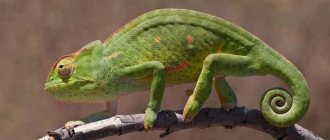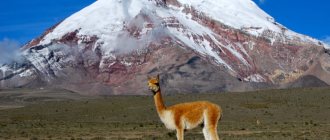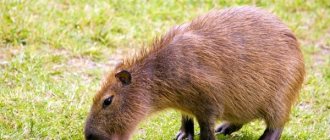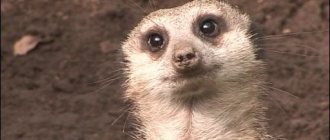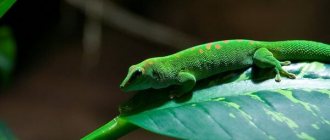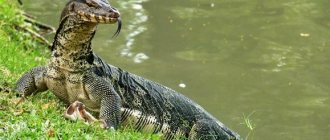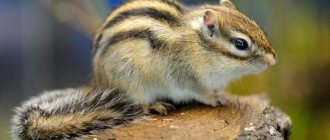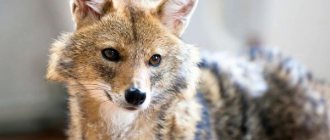- Wild animals
- >>
- Mammals
The guanaco is the largest herbivorous mammal in South America from the camel family, the ancestor of the Lama, domesticated more than 6 thousand years ago by the Quechua Indians. This is the most common camel species in South America. They have lived on the continent for more than two million years. If you want to learn more about this amazing animal, check out this post.
Species and man
Guanacos are one of two species of wild humpless camels in the New World. From time immemorial, people hunted this animal for its skin and meat. But the guanaco is not only an object of hunting; it is he who is the ancestor of the domestic humpless camel - the llama. The process of domestication is believed to have begun about 5,000 years ago. Tamed guanacos were used both as beasts of burden and sheared for wool.
The fact that the guanaco plays a very important role in people's lives is evidenced by the fact that in Argentina there is a city named after this animal - Guanaco. Now there are few guanacos left in the wild, and the numbers of these animals continue to decline. This is due to pastures taken away from guanacos, where livestock are grazed, and poaching, which claims the lives of hundreds of animals every year.
On ranches in the Andes, guanacos are currently bred in captivity for their fur, which is used for clothing and jewelry. It resembles fox and is used both natural and dyed.
Distribution and habitats
Guanaco is a wild humpless camel native to South America.
This species is very unpretentious in its choice of habitats: the animal can live both at sea level and in mountains up to 4300 meters; in arid steppes, savannas, bush thickets, in some places even in forests, so its historical range is quite large.
At the beginning of the 20th century, guanacos lived across a vast territory of South America - in the steppes of the Gran Chaco (Argentina), in the savannas and deserts of Southern Patagonia, on the coast and even on Tierra del Fuego. They have now disappeared from most of their range, surviving only in the Andes, from southern Peru through Chile and Argentina to Tierra del Fuego. There is a small population in the mountains of western Paraguay.
Ecology [edit]
Natural predators of guanacos are pumas and foxes. [6] When threatened, they warn the rest of the herd with a high-pitched bleating sound that sounds like a short, sharp laugh. Although they are generally mild-mannered, guanacos often spit when threatened and can do so from up to six feet away. [18] [19]
Mating season[edit]
The mating season lasts from November to February [5], during which males often compete fiercely for dominance and reproduction. [ clarification needed
] Eleven and a half months later, a lonely Chulengo is born. [20] Chulengos can walk immediately after birth. Male Chulengos are driven out of the herd by the dominant male at approximately one year of age.
Appearance and morphology
The animal is slender, light in build, resembling a deer or antelope in proportions, but with a more elongated neck. The long neck of the guanaco serves as a balance when walking and running. Body length 170–225 cm, tail length - 15–25 cm, height at withers 90–130 cm; weight - 115–140 kg. Like other calloused animals, the guanaco has two-fingered limbs with small, blunt claws. The feet are narrow, mobile, deeply divided and form elastic calloused pads. On the inner side of the legs, “chestnuts” are clearly visible - the rudiments of the disappeared fingers, characteristic of the “progenitors” of callouseds.
Guanacos have large eyes with long eyelashes and rather large mobile ears. The coat is long, thick, and the color of the upper back and neck is red-brown. The belly, legs and neck below are almost white, the color boundary between dark and light colors is sharply expressed. On the “face” of the guanaco, the fur is dark and the ears are light gray. This animal differs from the vicuña, whose muzzle and ears are brownish (the color of the rest of the body is similar). Females are somewhat smaller than males.
Like all calloused guanacos, the guanaco has a three-chamber stomach, the sections of which differ significantly from the similar sections of the four-chamber stomach of ruminant ungulates. The structure of the genital organs of guanacos (and callouses in general) also has a number of features inherent only to representatives of this order. Another feature characteristic especially of humpless high-mountain camels is oval-shaped red blood cells, in contrast to the disc-shaped ones characteristic of the inhabitants of the plains. The fact is that when the body is dehydrated (and camelids can go without water for a long time), the blood thickens, and oval red blood cells pass more easily into narrow capillaries, without reducing the level of gas exchange in the organs.
Llamas are often confused with alpacas
Llama and alpaca are closely related members of the camel family. They are often confused, although a closer look reveals a few differences. The most obvious is the size difference. The former are about 1.3 meters tall at the shoulder and weigh up to 200 kg, the latter grow up to 0.9 meters and weigh less than 90 kg. Llamas also have long ears that curve inward like a banana; and alpacas have short, pear-shaped ears. Llamas have long muzzles, while alpacas have short and round muzzles. The alpaca's back is slightly curved, while the llama's is straight.
On a personal level, llamas are more independent than alpacas, who always try to be close to their herd. People who have worked with both species note that alpacas behave more like cats, while llamas behave more like dogs.
Lifestyle and social organization
Like other ungulates, guanacos are characterized by polyphasic activity. During the dark time of the day, animals rest; at dawn, activity begins, which during the day is replaced several times by a period of rest. In the morning and evening, guanacos go to watering holes.
These animals are capable of reaching speeds of up to 56 km/h, however, having a significant advantage over horses in the highlands, they are significantly inferior to them in the valleys.
Guanacos live in small groups of 2 types: firstly, harems of females with cubs, headed by one adult male. The number of animals in such groups ranges from 3 to 20. It is estimated that only 18% of adult males belong to harem groups. Secondly, bachelor groups of unstable composition, which flock to young animals who did not have time to acquire a harem, and aging animals who have already lost the company of the fair sex.
Guanacos, like vicuñas, have an interesting feature - they empty their intestines in certain places, for example, on paths, hills, etc. Large “signal” piles of dung are formed, which are visited by members of different groups. Such “signal” heaps exist for many years; the Indians know their locations and collect manure, which is fuel for local residents.
Guanacos stay mainly in the mountains, rising to the snow line, but avoiding snow fields; in the dry season they descend into wet valleys. Sometimes these animals undertake real migrations. The main enemy of the guanaco in nature is the puma. This cat hunts at dusk, and you can only escape from it by running away, noticing the predator in time. Therefore, even when the guanaco is resting, one of the group members is always on alert and, noticing danger, gives a signal. However, often a hesitant animal, most often a small cub, ends up in the teeth of a puma.
Natural enemies
In the fauna, such a timid creature as the guanaco has many enemies. First of all, large predators from the cat family. Especially the cougar. She lurks in the forest, comes out to hunt at dusk, and is very fast and agile. You can save yourself from it only by noticing it in time.
Often the prey of the beast are baby guanacos. In addition, maned wolves, dogs and humans are considered dangerous for guanacos. Therefore, wild llamas try to climb higher into the mountains to protect themselves from danger.
Nutrition and feeding behavior
Guanaco is a very unpretentious animal. Like all herbivores, they are inhabitants of harsh places; they feed on grass, leaves and twigs of bushes, and can go without water for a long time. However, when possible, he drinks regularly, and not only fresh, but also brackish water.
Guanacos are very careful animals; while grazing, one of the group members is sure to look around. When there is danger, it makes a loud sound, and the entire herd takes flight. In places where they are disturbed, animals hastily hide from view, but where they are protected, curiosity often keeps them from fleeing, and then they allow a person to come close to them.
Interesting Facts
- Guanacos can be called clean animals, as they have the amazing habit of going to the toilet in one common pile. The Indians, who use dung for fuel, do not need to walk and collect it for a long time.
- It is not easy to catch them, but the natives often use cunning. It is based on the extreme curiosity of these animals. The hunter lies down on the ground and begins to dangle his legs and arms in the air, and the guanaco almost always comes up to look at the curiosity. You can easily catch them here.
- If a family herd is protected from danger by a male leader, then in same-sex herds special “sentinels” are allocated from adult males to guard and signal danger, and they can replace each other.
- The English naturalist and writer Jeld Durrell described the guanaco very vividly. The bright and colorful description of the male and his three girlfriends, as well as two cubs who came out to inquire about the expedition, is touching. Especially, as he writes, the female half of the expedition was delighted, “from whom the innocent appearance of the creature evoked enthusiastic sighs and lisps.” This is the guanaco - charming, cautious, but very curious.
Reproduction and raising offspring
The guanaco's rut lasts from August (in the north of its range) to February (in the south). During this period, fights occur between males for possession of females. Like all camelids, guanacos rise on their hind legs, crush each other with their necks, bite, beat with their front legs, and spit saliva and stomach contents. Mating of guanacos, like camels, occurs in a lying position.
Pregnancy lasts 11 months. One, very rarely two, cubs are born. The development of babies is similar in all camelids. Milk feeding lasts 4 months, sometimes up to six months. Females become sexually mature by 2 years, males later.
Guanaco diet
The ascetic existence also left its mark on the diet of the guanacos, who were accustomed to being content with scanty vegetation and water of dubious quality.
In some regions, guanacos compete for food resources with cattle and horses. If the source is nearby, they quench their thirst every day, not disdaining brackish and even salt water. If the source is remote, they visit it once a week or go without water altogether. They feed the body with minerals by licking open deposits of natural salt.
The guanaco's diet consists of plants such as:
- mulinum spinosum (shrub);
- colletia spinosissima (shrub);
- lichens;
- herbs and flowers;
- mushrooms and mosses;
- fruits;
- cacti.
Important! Thanks to the special structure of the stomach, like all ruminants, guanacos chew vegetation several times, extracting all the nutrients from it. This ability helps them survive in the absence of pasture for a long time.
Return to content
Keeping animals at the Moscow Zoo
At the zoo, a female guanaco lives in the same enclosure with other humpless camels - a llama and a vicuña. The aviary is located in the Old Zoo area immediately near the entrance, on the right. During the warm season, capybaras also live here, and either the smallest swans, coscorobes, or black-necked swans swim in the water. All these animals belong to the fauna of South America and live side by side quite peacefully. The company of humpless camels is “female”; it is quite friendly, despite the animals belonging to different species. They eat next to each other, rest next to each other and understand each other perfectly, since the expressive poses and movements of these animals are similar.
Of the entire company, the guanaco is the oldest, more than 20 years old. Her favorite resting place is a large stone slab in the far right corner. Here our “lady” likes to stand for a long time and look at the street: at people, transport. Or he lies, surveying his aviary and pond with many birds.
The guanaco survives our Moscow winters, even the coldest ones, without any problems - neither winds nor frosts penetrate their warm skin. But the animal does not like deep snow. He prefers to walk along trails, so in winter most of the enclosure is occupied by a huge untouched snowdrift.
The guanaco is very unpretentious in food - it eats hay, (in summer - grass), branches. The diet is varied with various vegetables, oats, sprouted wheat, and corn. If a guanaco comes closer to the moat, to people, this does not mean that it is hungry - the animal just wants to communicate, everyone needs variety in life. Therefore, do not rush to throw her a piece - even tasty apples and carrots in large quantities can be harmful, and soft bread is completely dangerous for all ungulates. A male guanaco who lived in this enclosure several years ago died after gorging himself on such “gifts.” Don't feed our animals, let them live long and delight everyone with their good disposition and healthy appearance!
Geographical distribution
Chulengo, a young guanaco.
Guanaco in Fray Jorge National Park, Coquimbo. It is found only in South America, supporting populations throughout western Argentina and Bolivia, most of Chile, and smaller populations in western Paraguay and Peru. When Europeans arrived in South America, they estimated their population at 500,000.
Due to uncontrolled hunting and degradation of their habitat, there are areas where guanacos are considered an endangered species as they are hunted for their meat, skin and fur. In the highlands of the Andes and Puno, populations are small and in many cases there is a gradual decline in their numbers.
Argentina Its distribution has decreased by 58%;
even so, it is very wide, as it contains 95% of the world's population of this species; distributed from Puna to the Beagle Channel in the extreme south of Argentine Patagonia. In this country he enjoys some protection; The Province of Mendoza declared it a Provincial Natural Monument by Law No. 6599, passed on May 12, 1998 [15], and hunting it is strictly prohibited. This led to the species' infamous population recovery; most notably in Paramillos de Uspallata. Cutting is allowed in other provinces of Viva del Guanaco to take advantage of its fibers. In general, the highest densities of guanacos are associated with those spaces that present greater vegetation cover, such as tall shrubs, uneven terrain, the presence of cover, steep slopes, and escape routes from predators. [ 16 ]: In the province of Neuquén there is a nature reserve called Auca Mahuida, where guanacos, among other animal species, are protected and there is a significant population of them. [ 17 ] The province of Tierra del Fuego took into account its importance and relevance for the province, which made it a protected species. Chile Its distribution was 75% withdrawn. It is protected in several reserves, such as the Torres del Paine National Park. Peru It is a critically endangered species despite being hunted for "sport" as this endangered status is not known to public opinion. In this country, its prevalence has decreased by 75%; formerly its geonemia also extended across coastal deserts. Today it is protected in several high Andean nature reserves such as Salinas and Aguada Blanca. Bolivia It is reduced to its minimal expression. Paraguay There are only a few herds left in Medanos del Chaco National Park, Boquerón Department, in the heart of the Paraguayan Chaco. [ 18 ] Ecuador Considered extinct (Puig 1991). [ link required
]:
Preservation
When the Spanish arrived in South America, there were about 50 million wild guanacos. [ 19 ] Since then they have been hunted for their fur, but mainly to provide pasture for flocks of sheep. Due to the mass extinction of guanacos, the population was increasingly declining. Today there are 1,500,000 guanacos left, just over 1 percent of the original number. The IUCN lists them as "not endangered". [ 19 ] [ ] [ ]
